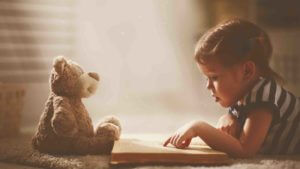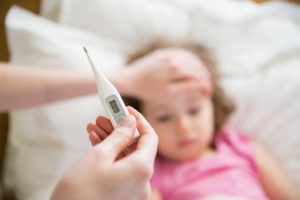When children play, it happens quickly: Hit the wall during the first crawling attempts, fell off the bed with momentum, or maybe even off the swing. Because of their body proportions, children always fall on their heads.
How dangerous is such a fall on the head? And how can you tell if your child has a concussion? Here you will find all the answers to your questions.
Table of contents
What Is A Concussion?
You should never underestimate the danger of head injuries in a fall. But fortunately, nature has designed children’s skulls to be very robust: You remember from your child’s birth how much such a small skull can be deformed.
In the event of a fall, this also benefits the child, because any shock is first absorbed. That is why most falls on the head in children are accompanied by small bumps.
The famous little horn can also turn blue and green, sometimes showing quite interesting shades of black, purple, and yellow, but heals after a few days. You should always cool your child’s bumps immediately, as they will heal faster.
A minor head laceration is also not that bad yet. However, head lacerations bleed a lot, so parents get a big scare. These injuries belong to the category of external bleeding. The so-called head rind lies around the outside of your child’s skull and protects the skull.
The scalp is very well supplied with blood. If your child injures the head rind, he or she will immediately be covered in blood. If the laceration is larger, it must be stitched. For smaller wounds, a staple plaster is usually sufficient. In any case, the bleeding must be stopped immediately and the wound must be cleaned.
You can give your child first aid by pressing a clean cloth or a piece of clothing against the wound to stem the loss of blood. You should apply a pressure bandage as soon as possible and have the wound professionally treated. A wound that is bleeding heavily is not a sign of a concussion.
Mild Concussion Or More Severe?
A mild concussion is when the concussion from the accident causes minimal injury to the brain. There is no bleeding in the brain in this case, and major injuries do not occur.
Even with a severe concussion, there does not have to be bleeding in the brain – doesn’t have to, but can. Cerebral hemorrhage represents the most severe degree of concussion.
The problem is that neither you as a mother nor the paramedic in the ambulance can easily look inside the head. Only in the hospital are examinations such as computer tomography possible. Whether this is necessary depends on whether your child shows concussion symptoms.
The concussion symptoms are initially no different from the symptoms of a brain hemorrhage that starts later. The brain hemorrhage is the result of a concussion.
If you search the Internet for terms like “concussion symptoms” or “concussion symptoms later”, you will find: First of all, any fall on the head seems like a life-threatening situation.
In reality, however, your child’s skull can usually withstand much more than expected. Because the concussion symptoms are not so easy to assess, they will always assume the worst in the hospital and rather give the all-clear later.
How Do You Treat A Concussion?
First of all, it depends on what concussion symptoms a child shows. In the case of a mild concussion, rest is the order of the day. Sleep is especially good. So if your child gets tired quickly after a fall and falls asleep, let him sleep.
If you want to make sure your child is okay, you can wake him up after two hours. However, you should let your child sleep for the time being. If your child feels nauseous after the fall, has a severe headache, or is unconscious, you should take him or her to the hospital immediately.
Vomiting is normal after a fall with a lot of fright and fear. However, if your child vomits more than once, you should also take him to the hospital. This is especially the case if there is a clearly visible bump.
It looks worse if your child has problems with hearing or seeing. If speech becomes slurred or your child has a fever, you should have him or she examined at the hospital immediately. but again, your child needs rest.
If he wants to sleep while waiting in the emergency room, just let him sleep. The brain regenerates when it rests – so sleep already allows healing. Bed rest is important.
Specter Of Brain Hemorrhage: Can Kids Get It?
Theoretically, it can occur in children. However, for an internal brain hemorrhage to occur, it really takes a lot of force. Traffic accidents and falls from upper floors or garage roofs cause brain hemorrhages, and sometimes a fall from a loft bed does, too.
If your child falls from a changing table, crib or sofa, out of a stroller or high chair, he or she will sometimes show concussion symptoms, but will not necessarily have a brain hemorrhage. Nevertheless, you should have your child examined if he or she has fallen. A brain hemorrhage can only be detected by CT scan or MRI.
A brain hemorrhage shows up hours after the accident, so you often examine 24 hours or even 48 hours after the accident. This is necessary. This is because in the case of a brain hemorrhage, your child will first behave normally after the fall.
The concussion symptoms set in later. Your child may pass out after an hour or two. Or it may show other concussion symptoms. That’s why they keep your child in the hospital for up to two days for observation in such a case.
Symptoms Of Concussion
- Unconsciousness or loss of consciousness, perhaps hours after the accident.
- Moderate to severe headache.
- Profuse and/or repeated vomiting.
- Swelling that resembles a pillow.
- Problems with speech, such as slurred speech or no speech at all.
- Disturbances in hearing and/or vision.
- Bleeding from the ear or ears.
Not all concussion symptoms need to occur at the same time. If your child shows one or more of these signs of commotion cerebra after a fall on the head, take the child to the hospital. The pediatrician can’t do much – you really need to go to the hospital.
There, your child can be adequately examined. This is important to rule out more serious injuries such as a brain hemorrhage, traumatic brain injury, or others. By the way, head trauma and concussion are not the same things.
It is an injury that can occur due to a concussion. Skull brain trauma can involve skull fractures, but it doesn’t have to. And your child doesn’t always have a laceration to the head when he or she sustains a traumatic brain injury.
By the way, older children often get concussions while playing sports. For safety reasons, your child should always wear a helmet when riding a bicycle, on a scooter, roller skates or inline skates, or on a skateboard. The helmet can prevent serious head injuries.
However, it does not completely protect against injuries: If in doubt, your child will get away with a mild concussion if he or she would have had a brain hemorrhage without a helmet. And the helmet is not only necessary during the learning phase.
After all, most accidents don’t happen because children can’t control their bikes or roller skates. They happen because the various road users do not behave in a predictable manner, which is why collisions occur.
Conclusion
The skull bone of children is still soft and elastic. In the event of a fall, it can often absorb the shock. If your child only has a bump and shows no other concussion symptoms, it is enough to cool the bump and perhaps treat it with an emergency cream.
Lacerations to the head and wounds to the face, however, should always be treated by a doctor. If your child shows symptoms such as vomiting, pain, unconsciousness, or impaired hearing or vision, you should take him or her to the hospital immediately.
This is important because there may be head trauma, a brain hemorrhage, or other serious injury. The pediatrician cannot help in this case. Symptoms of a concussion do not always appear right away but may appear over hours or even days later. Therefore, your child will probably need to stay in the hospital for up to two days for observation.










